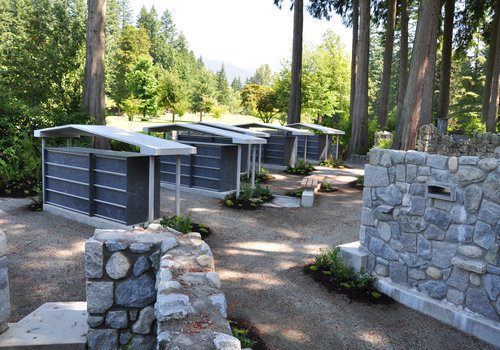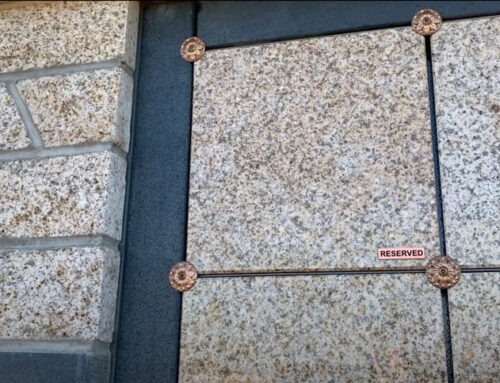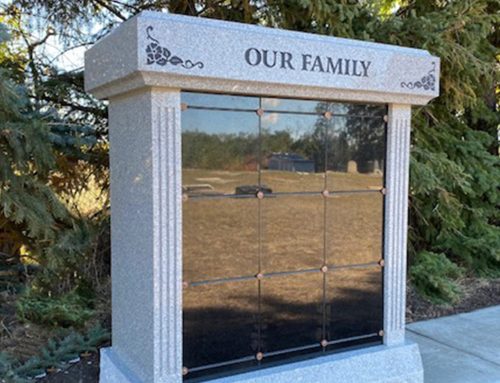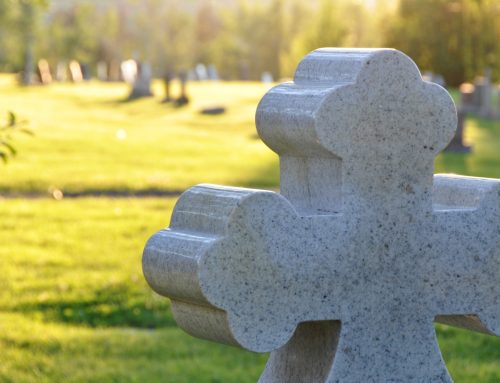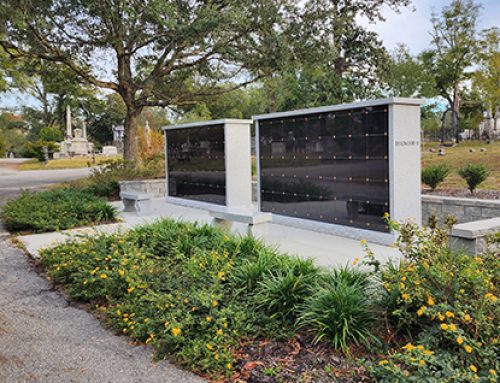Cemetery VS Cremation
Traditions are familiar, intensely personal and comforting rites that are passed on through the generations, and nowhere is tradition more powerfully observed as in the rituals of burial.
The practice of commemorating life is the one rite of passage that people feel a duty to honor, in part because the death of a close one marks a passage within their own lives.
But as times change and the Baby Boomers start to leave their mark on interment practices, they are beginning to fundamentally change how society looks at what is considered a tradition worth keeping and what is no longer of value. So the question is, “Are cemeteries effectively moving with the times?”
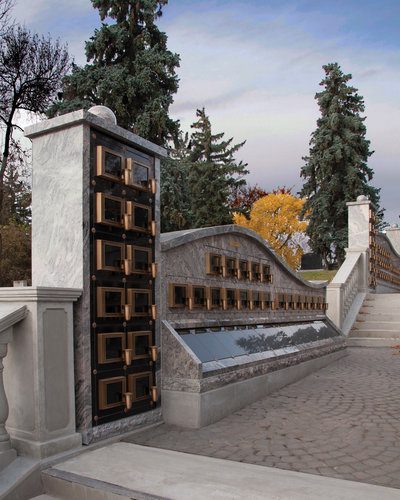
We can go back a couple hundred years in North America and wander through the formal cemeteries of the past. As we proceed towards the more modern sections of these areas, one notices that very little has changed.
Spaces for in-ground interment are evenly allotted. Monuments are respectfully placed at the head of each plot row on row. Other than the use of backhoes (instead of shovels), the business operations of the cemetery service remains pretty much the same. In many respects, the cemetery business environment has been very much like that of a utility company, in that there is a need for only a limited number of cemeteries in the community.
Thus the business automatically “arrived” at the gate without a lot of need for marketing to get the work. As an approved monopoly for centuries, the cemetery has never really had the need to adapt or change, as in-ground burial was traditionally the preferred interment option. For cemeterians, they have for the most part experienced a very comfortable work environment when compared to the “dog-eat-dog” businesses found elsewhere.
Cemeterians have never had to for example deal with the stress of literally re-inventing their business every other year in order to remain relevant as many High Tech Companies have to do.We can go back a couple hundred years in North America and wander through the formal cemeteries of the past. As we proceed towards the more modern sections of these areas, one notices that very little has changed. Spaces for in-ground interment are evenly allotted.
Monuments are respectfully placed at the head of each plot row on row. Other than the use of backhoes (instead of shovels), the business operations of the cemetery service remains pretty much the same. In many respects, the cemetery business environment has been very much like that of a utility company, in that there is a need for only a limited number of cemeteries in the community.
Cemeterians have never had to for example deal with the stress of literally re-inventing their business every other year in order to remain relevant as many High Tech Companies have to do.
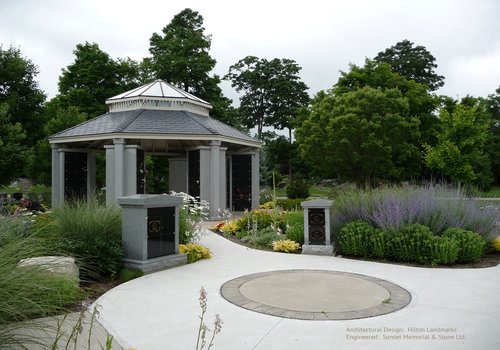
As hard as it is for some to imagine, this rather comfortable situation is beginning to dramatically change, as a series of combined forces are affecting the course of cemetery interment. First, the global population has grown from 2 Billion in the 60’s to 8 Billion today, and all of these new populations are all looking for the North American affluent lifestyle.
Global Warming/Climate Change is on the minds of many and consequently there is a heightened sensitivity to how humans are degrading the environment. This in turn has contributed to a deceleration of traditional in-ground burials as people prefer to leave a lighter environmental footprint.
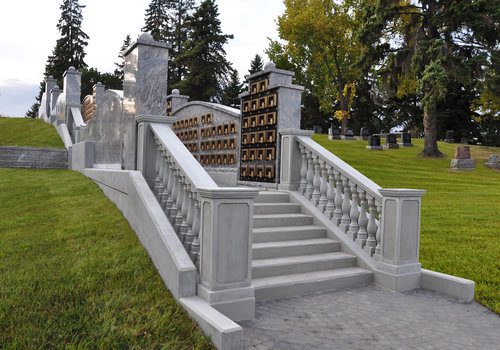
Second, the Baby Boom generation (the wealthiest generation in history) is having a tremendous impact on burial “traditions”. They are a unique force that is used to controlling how they want their wealth to be used, and they have no qualms about prescribing how they want their remains to be treated. Many Baby Boomers are choosing cremation as it allows them the creativity within their wills to direct the scattering of their remains in sentimental locations. Unfortunately, when imposing this action on their families, the whole concept of memorialization is missed. But this is another topic for another day.
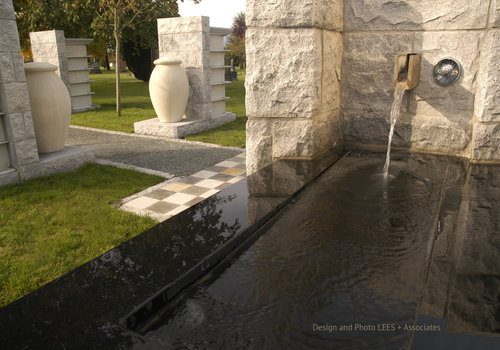
And third, as hard as it is for some demeterians to imagine, the emergence of cremation has created a new market segment that sees the cemetery as no longer relevant. Statistically, in North America the growth of this segment has been a West to East phenomena, perhaps because families out west are less “rooted” and less “traditional”. Whatever the reasons behind this segment’s growth, the impact to the cemetery is very clear in that for the first time, the cemetery’s monopoly has been challenged as an unseen competitor starts working in the background.
The competition is insidious in that it’s not a particular person, or entity that allows one to focus a more traditional response. Instead it is a “mindset” within people that an acceptable place for human remains resides in the previously unthinkable location of an esteemed position over the fireplace mantle, in the deep blue ocean, in the family lake, or on a memorable ski run in the mountains, – and yes, even in the bedroom closet! Worst of all, this new competitor is selling his product at no charge!
In this “unsettling” environment, many cemeterians are beginning to ask, “What can we do today to complement our “traditional product” to ensure we remain relevant in what to some must look like a rather bizarre twist in the way of doing things.
“There is always a strategy to meet this challenge.” says Gordon Leaf (MBA, P. Eng.), “Although there is no one right way of doing things, as each cemetery may be experiencing these trends at different rates, and have to contend with their own unique circumstances”. Having worked for 20 years as a product manager at Nortel Networks (a high tech communications company), Gord created product concepts and business strategies to help what were old style, utility minded telephone companies, such as Bell Canada, Verizon, Sprint, and British Telecom, transition into the dominant communications/data providers they are today.
Now President of Sunset Memorial & Stone (a columbarium manufacturer), Gord offers a few suggestions to those looking for guidance through what can look like an intimidating new situation.

Creating the Right Mindset for Change – Cemetery vs Cremation
The single most important step after recognizing that there is a problem to address is to flick the switch in one’s mind to be open to the possibility that an effort to change product and process may be required. It’s amazing how at first subtle changes in the business environment can sneak up on us and significantly impact the whole foundation of the business right under our noses.
If this happens, don’t feel bad because our brains are pre-wired to simplify the world we live in using a wide variety of assumptions and biases. To help avoid this trap, many managers in a wide variety of industries try to take a step back (often in an off-site setting) to look at the business in a new light to ensure all they have grown accustomed to, and all the assumptions used to get to where they are today, are in fact still valid.
It has been my experience that the most successful managers have a steely pragmatism and a willingness to look at the world the way it is, and not the way they would like it to be. They are very attune to the fact that we all have a tendency to try and rationalize and convince the world that the new ways are not right. That they are a passing fad. Or simply, that their existing product remains superior.
This avoidance mentality is like trying to defy gravity. Futile efforts to fly over the emerging trends against the stream are exhausting and counterproductive, as prospective customers who listen to you trying to convince them to maintain a more traditional approach, will (rightly or wrongly) think of your comments as “self-serving”. Therefore for the sake of one’s mental health, the amount of effort expended in driving against the stream, and in the end, the health of the business, it is better to view the changing environment as a positive opportunity rather than a threat.
For many cemeterians the stress they experience regarding the challenges of cremation can be simply resolved with a twist of perspective in which a potentially depressing situation turns into an exciting time to create a new product of value for the community.”
Structured Creativity- Cemetery vs Cremation
Structured Creativity
When people think of the creative process, eccentric, off the wall personalities like Lady Gaga may come to mind. People who tap into their free flowing thoughts to develop spectacular artwork using a magical, mysterious process that nobody can really understand. Sometimes with a lot of luck, using one’s intuition can work, but for most of us mere mortals, the most effective product development process use a highly structured approach that incorporates creativity only at specific points and only after important steps to understand the customer has been completed. Leaf suggests that, “For most people, this disciplined approach to product creation significantly lowers the risk of failure, and by starting with efforts to more deeply understand the customer is by far the best first step. .”
Sometimes with a lot of luck, intuition can work, but for most of us mere mortals, starting with the customer and understanding their needs is by far the best first step. Take a new look at your customers and try various ways of grouping them in terms of their unique characteristics. Try to understand your customer’s motivations and needs better than they do themselves. For example, many prospective cremation customers don’t recognize the need to create memorialization for the benefits of those surviving relatives, nor the importance of interment in a public place so that family members don’t have to make an uncomfortable appointment to see a loved one above a relative’s fireplace, or the fact that this year’s beautiful scattering location could be next year’s parking lot.”
Above all else, “Dispel within your mind the myth that the choice of cremation is solely price motivated. In most cases, this is simply not true. More than price, people are looking for simpler funeral ceremonies, options to allow cremains to be split between family members, avoid the phobias associated with being interred in the ground, creating a smaller environmental footprint etc.” That said, Leaf encourages people to confirm what is reported in industry statistics with one-on-one conversations with their own customers.
Obviously price is an important factor, however, those cemeterians who become fixated on the price of cremation play a very risky game. For one thing, there are not significant economies of scale for most cemeteries that do not have a crematorium on site. Whether the cemetery is involved in 10 cremations a year or 150, the operating cost per interment doesn’t really go down much with higher volume. So lowering the price to get higher volume doesn’t give any financial advantage over another competitor, who can also simply lower their price to meet your move. No matter how low one goes, there is always some desperate soul out there willing to ignore their financial future by beating your price. For another thing, if price is your game plan, the most competitive price discounter out there is Mother Nature who offers her interment services for free. That’s pretty hard to beat.”
For most cemeteries, avoiding the price play, and expanding focus on developing new products and services will become a more successful approach. Leaf suggests that, “Once you think you have a good handle on the customer needs and the prices people will be willing to pay, take the time to create the ideal product(s) that address these new emerging needs for each market segment. This is when focused creativity is encouraged as it is not the time to place real-world limitations into one’s thoughts. Free yourself from the “artificial” restrictions of what you think your business is, and is not responsible for. Instead focus on solving the customer problems you uncovered during your new look at your marketplace, and on delivering higher customer value solutions through new products and services. How you decide to eventually deliver that value is a separate matter, and if you impose real-world restrictions on yourself too early in this process, you may miss a truly golden idea.”
Leaf suggests at this stage that “Above all else, don’t forget that service is as much of the product as anything physical. Service has evolved into a highly valued product in itself in our society. Cemeteries can absolutely leverage this in their solutions.”
Gord encourages cemetery management to look at the ideal solution as not one magic all-encompassing product, but instead as a series of multiple products. He believes we need to address the diverse needs within the cremation market as, “Not everyone is the same.” For example, in addition to the standard community columbaria, the provision of smaller family columbaria either on their own, or present in a family estate that mixes both traditional interred family members with cremated family members could enable people to maintain a sense of tradition around the family without compromising some of their new-age perspectives. At the same time scattering gardens within the cemetery could address those who feel that a simple plaque is all they need for memorialization, while those that want more memorialization could be offered sections in the cemetery with larger monuments without the land needed to accommodate a full casket.
The Importance of Differentiating Your Cemetery- Cemetery vs Cremation
It is very hard to compete against Mother Nature. That beautiful lake front cottage, the forest glen, or ski hill is pretty formable, and to motivate people to use your cemetery will require leveraging every natural advantage you have. One growing trend that seems to have some success is expanding the community’s perception of the cemetery by viewing it as a park for the living.
In pursuing this initiative, some cemeterians have taken advantage that their cemetery has a direct, personal history with people and have transformed the park into becoming more of an integral part of their society. For example some cemeteries have: created outdoor gathering spaces for ceremonies and functions, they have promoted historic walks with commemorative plaques and historic references, they have encouraged community events and celebrations in prominent locations of the grounds, or established annual candle light services with gorgeous lights illuminating the grounds, or they have promoted October 31st Night of the Dead celebrations and even orchestral performances. All of which are designed to keep people coming back to the park outside of the context of mourning a family member.
Another trend that seems to be starting to gain traction is looking at structures within the park as opportunities to differentiate the site with artistic flair. Columbaria suppliers are evolving their portfolios from the ridged, uniform Communist East Bloc look that symbolized the functional importance to the early cremation products, to truly contemporary pieces of art that people want to be associated with. Leaf chuckles in conveying that recently, for the first time in his career, a customer described one of the products he helped develop as “sexy”. It wasn’t a high tech communications product, it was a columbarium.
Gord believes, “If you have succeeded in properly differentiating your product, your sales job becomes significantly easier. The value should be visually and spiritually obvious.”
Selling and Implementing the Vision- Cemetery vs Cremation
Money talks, and the investment funds needed to create new, innovative products to meet the changing needs of the cemetery, will flow to those people who can show an inspiring return on investment. For many financially minded individuals this type of presentation is second nature, but there are a significant number of cemeterians out there who excel at serving the community and do not have the background to properly sell their vision.
To this end, Sunset Memorial & Stone has created a Financial Performance Calculator available to prospective customers at no charge. It is specifically designed to assist people who may have limited experience in putting a business case together.
All that cemeterians need to do is fill in key variables such as the desired number of niches, the forecasted sales, and the price per niche, and the calculator will automatically tell them the number of years until the investment is paid back and the Return on Investment (ROI). Best of all, it can provide guidance as to how to improve the financial performance and even advise cemetery management if the are buying too many niches for the initial columbarium purchase.
Leaf goes onto say that – It has been my experience that there is no one right business case when trying to assess the financial outcome of something that has not happened yet. Instead cemeterians are encouraged to “play” with the business case to look at a wide variety of scenarios like:
1. What happens if my future sales are only ½ of what I’m projecting?
2. What is the number of years payback if I go for that new cool accessory on the columbarium and I charged a little more?
3. What is the result if I go for a more basic columbarium product and spend more money on landscaping?
By creating a number of different scenarios and looking at the financial implication of each scenario, cemeteries will be able to more deeply understand which variables are critical and require more attention to detail, and which are less relevant. This assessment also arms you with the thoughtful response to “zinger” questions coming from your board of directors as you make your pitch.
Also by going through the business case analysis, it opens up the opportunity for an honest assessment of what portion of the “ideal product” can be delivered by the cemetery, and what portion would be better if it were outsourced. Find out “who” can deliver “what” most cost effectively.
If you decide to expand cemetery operations into new domains, make sure that this new role is taken on in “bite sized chunks”. Leaf stresses that “If you decide to outsource some aspects of your product, make sure the cemetery takes full responsibility for the end result.
Too many companies take half steps in their products by outsourcing part of the solution and absolving themselves of the remaining responsibilities, thus leaving it to the customer to figure out how to pull everything together. This approach not only creates opportunities for customer disappointment, it also distances the business from the customer, and inhibits further opportunities to creating new and more insightful products for them in the future.
For example, a cemetery may want to create a cremation service for their park, but doesn’t have the skill set to run the facility. Outsourcing the operation to a local funeral home may be an option, however, if the cemetery starts to view its role as solely a facility provider and nothing else, the sales aspect of that service has just been handed over to another company who may not always have the cemetery’s best interest in mind, and consequently a meaningful touch point with the customer has been lost.
He adds, “Don’t be afraid to leverage the expertise that is in the cremation community. No one person has expertise in everything and sometimes knowing the one’s own limitations can be a great attribute.” Leaf strongly believes that complimenting skills and product visions with hired professionals who have expertise in cremation can make for a winning partnership.
Landscape architects like: Hilton Landmarks, Lees and Associates, and EDA Land Planning are firms that not only bring their artistic creativity to bear in landscape design, their exposure to the wide range of cemetery businesses across the continent help deliver cemeteries with additional business insights and planning methodologies that can really set them up for long term success.
Evolution is a Process Not a Destination- Cemetery vs Cremation
Above all else, Leaf suggests that, “Cemeterians should be prepared that the creative process is iterative and may lead to spots never really considered. Try not to become too enamoured with a particular product idea, and be prepared to drop those concepts that are not making money, and dive more deeply into those that show more financial promise.”
Gord ads, “In a business environment that is becoming more dynamic, action is better than inaction. Even if our initial decision turns out to be wrong, it often leads to more insight and a better way forward.
Repeating the same routines based on past traditions will not only drive cemetery revenues down but they will eventually rob the future of what the cemetery could be for future generations.
This is the time for cemeteries to invest in that future product, share ideas, experiment and get excited with the prospect that a new vision may become the start of a new tradition”.
Columbarium USA is a subsidiary of Sunset Memorial & Stone LTD.
Your Content Goes Here

